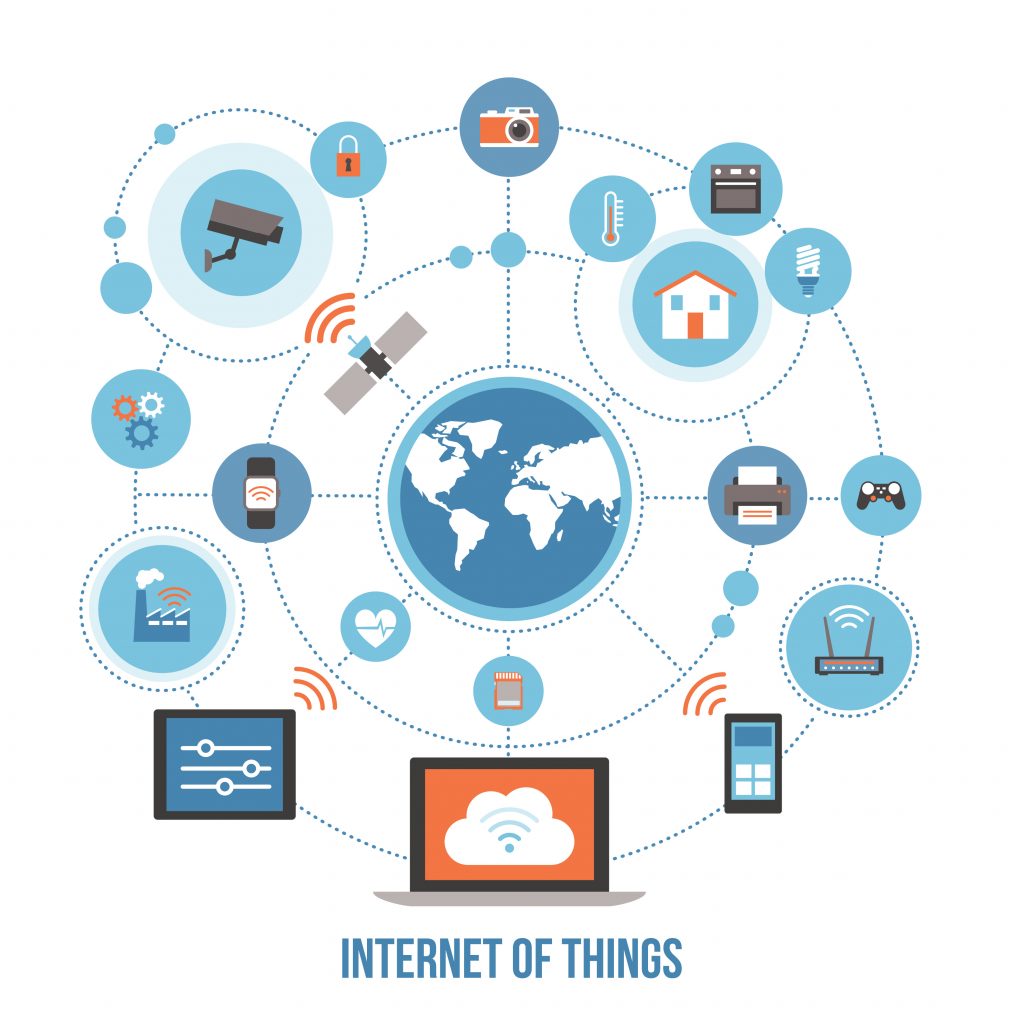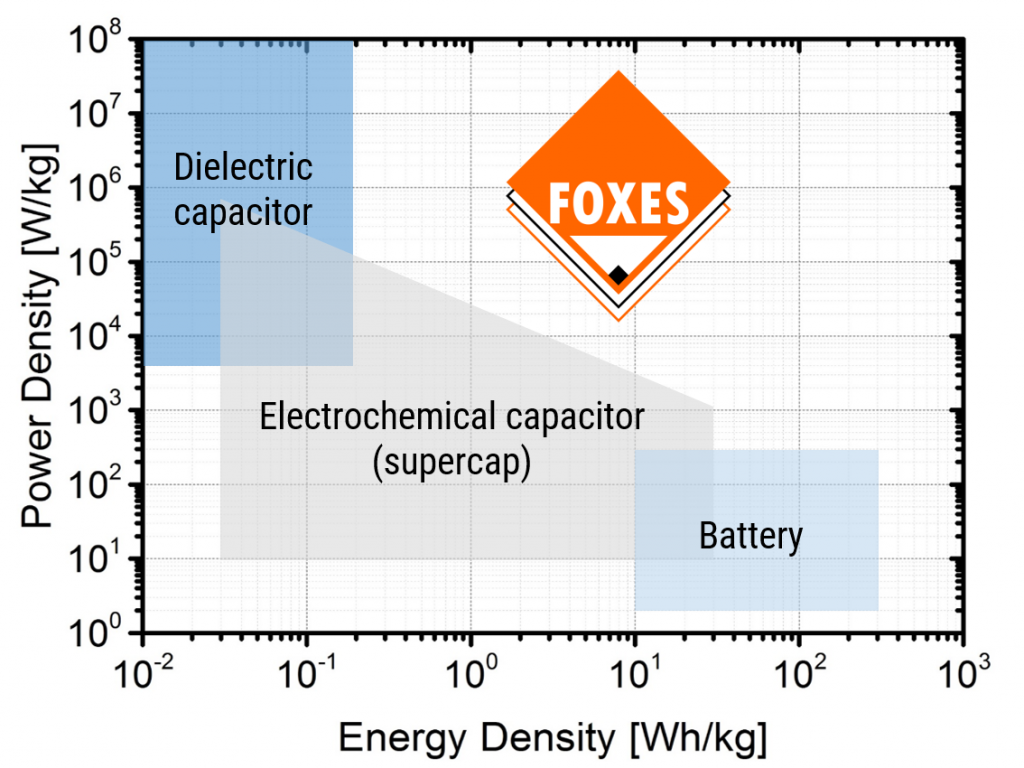Powering wireless IoT devices
The Internet of Things (IoT) is a network of electronic devices that are mutually interconnected and can intercommunicate. Typical examples are indoor/outdoor environmental sensors, structural health monitors on large structures, GPS tracking systems, and devices for health, lifestyle and communication.

IoT is the core technology for future-defining concepts like autonomous driving and automated factories (Industry 4.0), and enables CO2 emissions reduction through improved efficiency of machines and industrial processes. In order to fully realise the IoT potential, interconnected devices need to be fully wireless and energy-autonomous, and often need to be used remotely, without grid connection. IoT devices are currently powered by batteries, with or without an energy harvesting source (i.e. a photovoltaic cell) to provide intermittent energy intake.

storage density of various energy-storage technologies., an the targeted performance of FOXES Power Cube.
Batteries, however, have a limited lifetime (often smaller than the lifetime of the device itself) and due to their low power density are not ideal to withstand the fast changes in the energy intake/discharge induced by the energy harvesting module. Supercapacitors, on the other hand, cannot operate for many charging/discharging cycles due to limited stability (~104 cycles, compared to nearly unlimited cycles for dielectric capacitors). Dielectric capacitors possess the needed power density and stability, but lack the energy density needed for powering IoT devices for a long time (more than a few ms). FOXES Power Cube will fill in this gap, developing an energy storage system that has both high-energy and high-power density, while remaining portable.
A challenging test bed: environmental gas sensing
Developing FOXES Power Cube is only one of the project objectives: equally important is to demonstrate the potential of the new technology in both in lab and in a real-life scenario. The application chosen as test bed is one of the most challenging in terms of power budget: environmental gas sensing. These kinds of sensors are operated under heat or light excitation, and therefore involve power hungry actuators (heaters, light sources) that have jeopardized to date their use in autonomous IoT networks .
The project FOXES will develop a low-power IoT bundle formed by a light-activated gas sensors and by the necessary control and communication electronics. The combined system FOXES Power Cube + sensor node will be tested in the lab against gas mixtures under variable irradiation conditions. At the end of the project, FOXES demonstrators will be employed to realize and operate a net of wireless air-quality sensors in the urban area of Barcelona.
Scaling up FOXES technology
The long-term vision of FOXES is to produce FOXES Power Cube as a modular system that can be custom-designed according to the application needs. Stand-alone energy supply systems could be constituted by several Cubes connected in parallel over a large surface, but still maintaining portability (e.g. 10 x 10 cm2).
This will open virtually infinite possibilities of applications, especially in areas where lightweight IoT devices and low-cost energy generation are decisive, such as sensors for autonomous driving, aeronautics, industrial process automation, GPS systems, and wearables. A roadmap for scaling up FOXES Power Cube will be defined within the project.
Sustainability
Sustainability is one of the keywords of the project. FOXES Power Cube will be free of toxic elements and with minimized use of rare raw materials. We strive for developing economically viable and eco-friendly fabrication processes without toxic or harmful substances as precursors.
FOXES Power Cubes will be core enablers for IoT devices for increasing the efficiency of transport and industrial processes, reducing fuel consumption and CO2 emissions.
